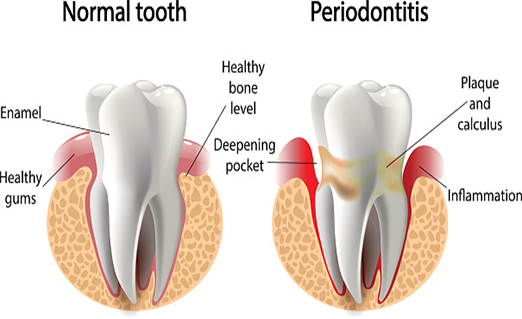Periodontal (Gums) Disease and Treatment

Periodontal disease, also known as gum disease is a type of disease that affects the surrounding tissues of the tooth, like the ligaments, the bone and the gingiva. This disease occurs due to the microorganisms that constantly attach the teeth.
Before progressing to full-blown periodontal disease, the tissues suffer two other affections: gingivitis and periodontitis. While gingivitis is a reversible process, the on-set of periodontitis always leads to periodontal disease. Bleeding gums is a sign that must warn you to be more aware of your dental care.
The dreaded tartar: Having tartar under your teeth and in contact with your gums represents a place where the bacteria can easily develop. In this case having a professional remove the tartar is recommended. If the deposits of tartar are allowed to increase without interruption the teeth will not stay in the alveolar bone. The next phase would be loss of teeth and the only alternative would be to schedule periodontal treatment.
Once it has been determined that periodontal treatment is necessary, assuming there are several healthy teeth left, one would seek out a dental care professional for crowns and bridges.
Another solution, though more expensive, would be for bone implants. This begins with the alveolar bone reconstruction that will adjust to the tissues left and continues with a ceramic, metal-ceramic or zirconium implant. If there are no teeth left, a plate is necessary.
